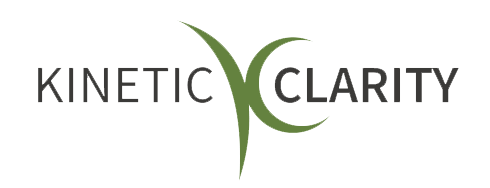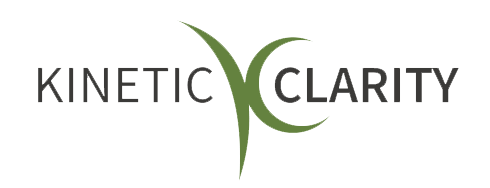Connect and Thrive: Remote Team Building Techniques
Can we? Can’t we? Whether to have remote and hybrid teams or not has been a consideration for many companies through the years and has also raised many concerns.

Can we? Can’t we? Whether to have remote and hybrid teams or not has been a consideration for many companies through the years and has also raised many concerns. How do we keep up productivity? How do we ensure good communication? How do we keep a strong company culture? How do we effectively manage change for a remote work strategy?
As we all know, the pandemic brought those questions front and center. Now, we have various work strategies, including fully in the office, fully remote teams, hybrid situations with team members in multiple locations, and a (sometimes) harmonious blend of the above.
This widespread adoption of employees working from home and hybrid work situations showed the challenges of building cohesive teams outside conventional office spaces. For example, studies have shown that remote employees are more susceptible to feelings of isolation and disengagement. It takes a truly dedicated effort to unite distributed teams, promote stronger interpersonal connections, and foster a culture of collaboration, transparency, and engagement despite physical barriers.
Adapting your management approach is critical. The consequences of “as we’ve always done” can be widespread, including team fragmentation, misalignment, and lackluster productivity.
So what’s the key?
Let’s consider embracing a different mindset. What are the unique challenges remote teams face, and what can we do to address them?
Understanding Unique Challenges in Remote Team Dynamics
Remote work offers benefits like greater flexibility, autonomy, and access to talent, but it’s not all sunshine and roses. It also brings unique “trouble spots” in communication, alignment, and team building. Here are some core challenges and their implications that leaders need to proactively address:
Lack of Organic Interactions
In traditional office settings, a significant portion of team bonding and relationship-building happens in a spontaneous, organic way. These casual conversations build trust, community, and mutual understanding among team members. They play a crucial role wherever they happen - by the water cooler, in impromptu problem-solving huddles, and face-to-face meetings.
Remote team members miss out on this interaction, which can impact relationship-building between team members.
Feelings of Disconnection and Isolation
An employee who works remotely can struggle with “not being in the loop” due to physical absence from offices. They can feel like they’re being overlooked for opportunities, feedback, or recognition.
As mentioned above, the casual conversations that are so vital in building community and trust are replaced by intentional, business-related conversations. This can cause disengagement, and hampers productivity long-term.
Communication Gaps and Misalignment
The absence of in-person meetings and observations can reduce context. How often have you misunderstood a Slack message, email, or text, for example?
Vital information can get lost or misinterpreted through digital channels. It can also be delayed by unintentional situations, such as not receiving time-sensitive information because of technical difficulties.
Decline in Spontaneous Collaboration
Dynamic generation of ideas through whiteboard discussions, post-meeting conversations, and hallway bump-ins decrease substantially. This impedes organic innovation.
Addressing these challenges requires understanding the root causes behind lagging engagement, trust deficit, and spotty collaboration in distributed teams. Only then can leaders cultivate solutions tailored to remote environments.
Intentional Team Building Strategies for Remote Work Settings
Here are four strategies and related tactics that can enable deeper connections, transparency, and engagement between remote employees:
Strategy #1: Promote Interpersonal Connections
At its core, team building is about enabling meaningful human connections. Anyone who’s been through team building exercises with me knows how much I love doing activities that have people out of their seats and interacting with each other. And, there are ways to “get you out of your seat” that can still be done virtually.
Virtual team activities, when well-designed, spark interaction between employees in fun and positive ways, allowing interpersonal relationships to develop more organically, even from afar.
Some companies have addressed this by providing multiple ways to connect, like having a Slack channel for everyone to share pictures of their pets or the latest books they’ve enjoyed. Others might vote for a cause for everyone to get behind. It’s the giving season: many places have started their own version of Toys for Tots this year.
You can also provide an opportunity to connect over a collaborative workspace series on abstract topics like photography or mixology. The point is to provide multiple ways to connect and engage, periodically mixing professional and personal contexts. This satisfies your team’s basic human need to develop meaningful connections beyond formal work.
Strategy #2: Build Rapport via One-on-One Connections
The quality of the relationships built with immediate managers often determines how satisfied employees are with their jobs. Remote employees lack the impromptu access to leadership one might have in the office, so every second spent makes a strong impression.
As a leader of remote teams, it’s important to remember to be intentional and present in these interactions. Think about it like a doctor's visit. Would you prefer spending 10 minutes with a doctor who focused completely on you and answered all your questions or 40 minutes with a doctor who continually interrupted or paused you to answer the phone?
Being intentionally present in structured one-on-one meetings creates a dedicated two-way communication channel. Meeting in a video call rather than on the phone further improves communication and mitigates feelings of isolation or being left out.
Potential one-on-one conversation topics could include work planning, troubleshooting roadblocks, talking about work-life balance, career aspirations, and others. The benefits of these conversations are more than just validation. These relationship-building topics benefit you as a leader, the individual, and the team.
These conversations can:
- help star talent become more visible within the organization, even when not physically present in the office.
- enhance job satisfaction, leading to lower turnover rates and improved retention.
- increase your skills in mentorship and coaching, both critical components of effective leadership.
- provide opportunities to better align your team members with organizational goals.
- create a more positive, motivated work environment.
Strategy #3: Boost Engagement via Modern Digital Tools
One of the exciting things about today’s digital age is the number of modern digital tools. We’re so close to those flying cars they promised us, right?
The tools we have now can make remote work easier and super fun without the cost to productivity. At first, it may take a concerted effort to ensure remote teams are included, yet these innovative tools may actually help increase productivity.
Digital whiteboard apps or mind-mapping tools help remote and hybrid work teams visually collaborate, ideate, and innovate in real time. Public dashboards can display team goals, individual contributions, and progress indicators to motivate employees through gamification. We even have platforms to host virtual meetings for everything from small groups to large-scale conferences. It’s amazing what technology can do.
Whatever tools you use, remember to focus on inclusion rather than production. Employee satisfaction leads to increased productivity; going after the human goal can help you reach the organizational goal.
Strategy #4: Reinforce Shared Culture through Traditional Techniques
Modern-day tools aren’t the only options available to leaders. Teams still need shared experiences to normalize culture, which is why many organizations use conventional team building techniques.
For example, quarterly on-site retreats offer a good foundation for relationship-building between remote colleagues. I’ve often participated in retreats where the organization gave their top talent a bonus and paired it with Dare to Lead training or group coaching.
Whenever possible, traditional team building activities are highly recommended to provide that personal touch that makes such a difference. Group challenges, outdoor adventures, or volunteer work can effectively strengthen team bonds.
As a final mention, let’s not forget to celebrate the milestones of life. Work anniversaries, for example, or celebrating the completion of a particularly challenging project. These moments of fun help create that culture of recognition and appreciation, even when they aren’t in person.
Wrapping Up
The remote work paradigm requires a lot more thought around team building. Above all, it requires leadership to reorient management mindsets.
Consider stepping away from “we’ve always done it this way.”
The strategies here need a tailored approach that best fits your teams and organizational culture. Thankfully, the goal is always the same - to foster a culture where every team member is seen, heard, and valued.












